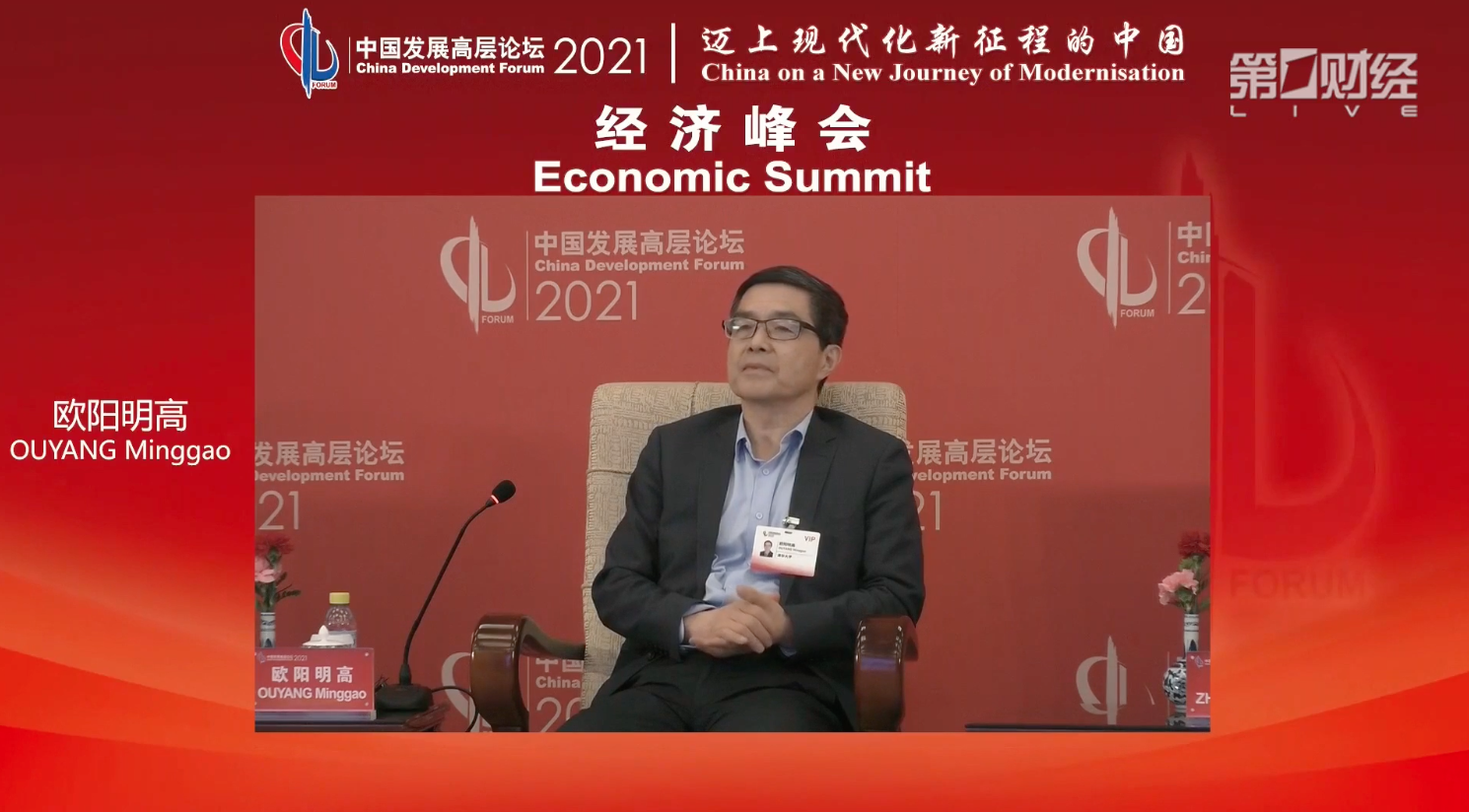On the evening of March 20th, Ouyang Minggao, an academician of the Chinese Academy of Sciences and a professor at Tsinghua University, shared his insights on “The New Revolution of the Automotive Industry” at the China Development Forum 2021 Economic Summit.
In my understanding, the new revolution can be divided into three parts. In retrospect of history, we have gone through three industrial revolutions and two energy revolutions, which are closely related.
In the first energy revolution, we had steam engines and trains powered by wood and coal. Then came the first industrial revolution. The second one, powered by electricity, is more representative of the shift from coal to oil as a source of energy.
During this period, of course, the automobile industry propelled the prosperity of the oil sector and also led the second industrial revolution. Now we are facing the possibility of a third energy revolution, which is the transition from fossil fuels to renewable energy, and we can call it “greenification”.
This time, the energy power system might be more electrochemical-based and consist of various batteries, such as energy storage batteries, photovoltaic batteries, and fuel cells. I believe there will be a leading product, just like the train and the automobile during the previous revolutions. This time, it may be electric vehicles.
Besides the low-carbon and green energy, the third energy revolution also triggers the next industrial revolution, which is digitalization and intelligentization centered around the network. Thus, these two aspects might be the core of the industrial revolution we’re about to experience.
From this perspective, there might be three major revolutions for our new energy vehicles. The first one is electrification, mainly the electrification of the power system. The emergence of lithium-ion batteries is a big revolution in the past century. Now electric vehicles have been entering households, and there have been breakthroughs in fuel cells.
In addition, we expect that within 10 – 15 years, electric vehicles will become widely popular, occupying half of the market share and reaching almost 100 million units in volume. This trend may further lead to the comprehensive electrification of transportation, not just automobiles, but even all types of vehicles. This is the most direct and immediate revolution.
The second revolution is the low-carbon shift, which is also the new energy revolution. Currently, electric vehicles are called new energy vehicles, but they are not completely new energy vehicles because the electricity they use may not be completely clean. However, we are in the midst of a revolution focused on carbon neutrality and carbon peak, and that’s when electric vehicles will truly use new energy.This is not a distant goal. As we know, coal-based power generation accounted for approximately 60% of China’s energy mix last year. It is estimated that this percentage will decrease by 1-2 points annually, possibly reaching 2 points, compared with the previous estimate of 1 point. Due to the goal of carbon neutrality, renewable energy will massively develop. Our plan is to increase by 1.2 billion, but in reality, China’s achievements often exceed the goal. I believe that an optimistic estimate of 1.7-2.0 billion is possible. Therefore, solar and wind energy will quickly develop in China. Recently, the Central Economic Work Conference has clearly stated to form a power system dominated by new energy. I believe this can be fully realized within 10 to 15 years. Therefore, the core of our new energy is that it is a fluctuating energy. Fluctuating energy requires energy storage. So, what do we rely on for energy storage now, at such a large scale?
We believe there are two main types of energy storage: energy storage batteries and hydrogen energy. Hydrogen energy is large-scale and long-term, while our batteries may be short-term and distributed. So, what do we rely on for batteries? Our future essential source may be the batteries on electric vehicles.
The scale of these batteries may be large, reaching up to 20 billion kilowatt-hours, i.e. if all vehicles were electric, with 300 million vehicles, this number would be equivalent to the total daily power consumption in China. This scale cannot be achieved by batteries alone.
The other approach for energy storage is hydrogen energy, which is of a larger scale, suitable for long-term storage of fluctuating energy such as wind and water power. This way, we can truly achieve carbon neutrality, bring about the revolution of electric vehicles and the entire energy industry, and enable energy revolution. Moreover, it can become a real new energy car.
Of course, the last revolution is intelligence, that is, our artificial intelligence revolution. From an energy perspective, the first aspect of this revolution may rely on smart energy. Our hundreds of millions of electric vehicles are distributed and must be connected through the Internet of Things and blockchain.
The other aspect is the development of smart energy, smart transportation, smart travel, and intelligent cars. That is, our cars become smart terminals, the largest smart terminals, which is also worth looking forward to.
Now everyone knows that all Internet companies have entered the automotive industry, which is also an important part of our automotive revolution. Therefore, if the three revolutions are focused on one product, it will be unprecedented.So, combining these three things together, we have a strategic product that represents the fields of new energy, intelligence, and electric vehicles. This will become an industry without boundaries, with an economic scale potentially reaching billions, tens of billions or hundreds of billions. Thus, I am convinced that this will change the entire economic structure, our lifestyle, and the organizational form of social enterprises in the future. With this revolution and the coming of the new industrial era, I believe that our industry will play a leading role.
This article is a translation by ChatGPT of a Chinese report from 42HOW. If you have any questions about it, please email bd@42how.com.
